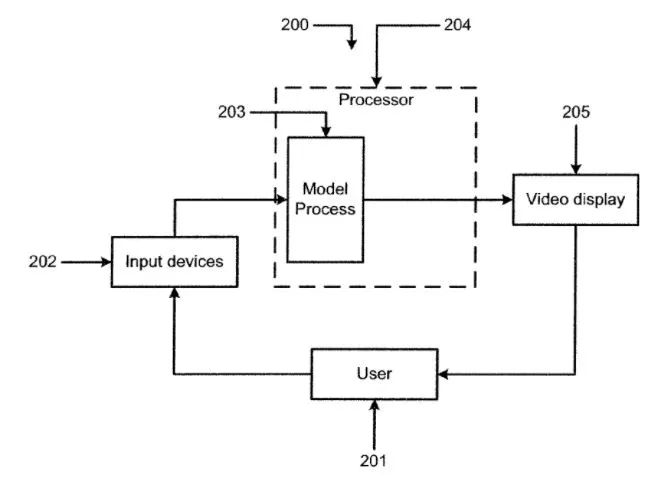- within Intellectual Property topic(s)
- in China
This decision relates to a European patent application in the field of flight simulators. Here are the practical takeaways from the decision T 0424/16 of 29.6.2021 of Technical Board of Appeal 3.4.03:
Key takeaways
- The choice by a game developer of the nature of the graphical elements to be displayed on the screen, the manner in which a user may control the graphical elements by means of the input device, and the consequences of such user inputs for the progress of the game, must generally be regarded as non-technical aspects of the game content, conceived as part of a creative design process aiming to produce a game which appeals to the gaming public.
- It is inherent in the nature of a flight simulation video game that the user must be able to control the flight direction by means of the input device. Whether this is achieved in a realistic manner by, for example, a joystick, or in a simplified manner by indicating a desired direction of flight by means of a graphical element movable by a pointing device, is a choice to be made by a game developer in deciding the content and nature of the game.
The invention
The invention concerns an aircraft control system and method for a user of a simulated aircraft, wherein the desired direction of flight is controlled by means of a "pointing device", which may be "a computer mouse, a touch screen or a trackball". By this means, "the user will be able to take off, land, fly traffic patterns, intercept other aircraft, etc., without spending a long time learning how to align simulated aircraft with the desired direction". The system is not, therefore, a professional flight simulator, of the type used to train pilots, but a system in which flight simulation software is run on a PC etc. for entertainment. In short, the invention is a computer game system and method.

Figure 1 EP2642467
Here is how the invention was defined in claim 1:
Claim 1 (Auxiliary Request 1)
An aircraft control system (200) for a user of a simulated aircraft (100) through a desired direction of flight (106), comprising:
a video device (205) for presenting the user with a view of a simulated environment;
modeling means (203) responsive to the desired direction of flight (106) for determining position and orientation of the simulated aircraft (100); and
a pointing device (202) for controlling the desired direction of flight (106), wherein a graphical element is shown on the video device (205) corresponding to the desired direction of flight (106) and wherein said graphical element moves in response to the user moving said pointing device; and
wherein the modeling means (203) analyzes which control surface adjustments are needed to the simulated aircraft (100) to fly along the desired direction of flight (106) and then applies said control surface adjustments to the simulated aircraft to align the aircraft with the desired direction of flight.
Is it patentable?
Claim 1 of the main request was found to lack clarity, which had been improved in the Auxiliary Request I (AR1). The discussion of inventive step was therefore focused on claim 1 of AR1. D1 was considered as the closest prior art. The Board considered the following features of claim 1 of AR1 as the distinguishing features:
(a) The graphical element on the video device "correspond[s] to the desired direction of flight" and the system operates "to align the aircraft with the desired direction of flight" as indicated by the graphical element;
(b) "wherein the modeling means (203) analyzes which control surface adjustments are needed to the simulated aircraft (100) to fly along the desired direction of flight (106) and ..."
(c) the modelling means "then applies said control surface adjustments to the simulated aircraft" (to thereby align the aircraft with the desired direction of flight).
It must first be determined whether features (a)-(c) are of a purely technical character, as contended by the appellant, or whether they comprise non-technical features.
Feature (a)
4.3 A video or computer game typically involves an animated image comprising graphical elements being displayed on a video screen to a user having the power to control or influence properties of one or more of the graphical elements by manipulating an input device, such as a mouse or joystick, the changes brought about by such manipulations being displayed on the screen.
4.4 While video screens and input devices are technical devices per se, the choice by a game developer of the nature of the graphical elements to be displayed on the screen, the manner in which a user may control the graphical elements by means of the input device, and the consequences of such user inputs for the progress of the game, must generally be regarded as non-technical aspects of the game content, conceived as part of a creative design process aiming to produce a game which appeals to the gaming public. The same is true of the tasks which a user is set and the levels of difficulty associated with such tasks.
It is accepted that in certain exceptional cases the Boards have recognised a graphical feature displayed in a video game as having a technical character (see below, points 4.18 to 4.21). However, as a general rule, the features mentioned in the previous paragraph constitute non-technical aspects of the game to be played.
4.5 In the Board's view, feature (a) is just such a non-technical feature, being part of the content of the game. It is inherent in the nature of a flight simulation video game that the user must be able to control the flight direction by means of the input device. Whether this is achieved in a realistic manner by, for example, a joystick, or in a simplified manner by indicating a desired direction of flight by means of a graphical element movable by a pointing device, is a choice to be made by a game developer in deciding the content and nature of the game.
Features (b) and (c)
4.6 Concerning features (b) and (c), clearly the modeling means is a technical feature, but it may be asked whether the effects which the modeling means is programmed to produce can be considered to make a technical contribution to the claimed subject-matter (the Examining Division found that they did not).
Features (b) and (c) produce the effects that the aircraft is aligned with the direction indicated in feature (a), and that the simulated change in direction corresponds to a realistic change of trajectory of the aircraft, i.e. one which could actually be brought about by appropriate adjustment of the flight control surfaces (ailerons, elevators, rudder) of the real aircraft which the system is aiming to simulate.
This is achieved by the modeling means performing an analysis to determine which control surface adjustments would be needed to fly along the desired direction of flight, and then applying these control surface adjustments to the simulated aircraft. As will be shown below (point 4.13), the Board's conclusion on inventive step is the same whether these features are considered to be technical or not, and hence the Board proceeds by assuming, arguendo, and to the appellant's advantage, that these features are technical.
Inventive step
4.7 Claim 1 therefore comprises a mixture of technical and non-technical features, and the Board will apply the principles set out in T 641/00, according to which features which do not contribute to the technical character of the invention cannot support the presence of inventive step, but may legitimately appear as part of the framework of the technical problem to be solved, in particular as a constraint that has to be met (T 641/00, Headnote, points I and II).
4.8 In the light of the above considerations, the Board sees the technical problem solved by the distinguishing features as implementing a control system for a simulated aircraft which aligns the aircraft with a desired direction of flight as indicated by a graphical element on screen which is moved by a pointing device, subject to the constraint that the simulated change in direction corresponds to a realistic change of trajectory of the aircraft being simulated.
4.9 Since the problem facing the skilled person includes the requirement that any manoeuvre must be realistic, i.e. must correspond to one which could actually be carried out in practice as a result of adjustments to the flight control surfaces of the simulated aircraft, it would be obvious, if not inevitable, that the solution must involve determining (by some means, which may be referred to as "modeling means") a set of adjustments to the flight control surfaces which would bring about the desired trajectory change. Without such a determination, it is difficult to see how it could be verified that the envisaged manoeuvre would correspond to one which could actually be carried out in practice. In the Board's view, the programming required to implement such a determination would be within the capacity of the skilled person in the field, and the appellant has not argued otherwise.
4.10 Having calculated the adjustments required to realistically manoeuvre the aircraft to align with the indicated direction, it would then be obvious to implement the manoeuvre by providing the calculated adjustments as inputs into the flight simulation software so that the simulated aircraft would follow the appropriate path.
In the end, the Board judged that the subject-matter of claim 1 of AR1 did not involve an inventive step within the meaning of Articles 52(1) and 56 EPC. The other auxiliary requests were either not allowable or not admitted into the proceedings. Hence, the European application was finally refused.
More information
You can read the whole decision here: T 0424/16 of 29.6.2021 of Technical Board of Appeal 3.4.03.
The content of this article is intended to provide a general guide to the subject matter. Specialist advice should be sought about your specific circumstances.


